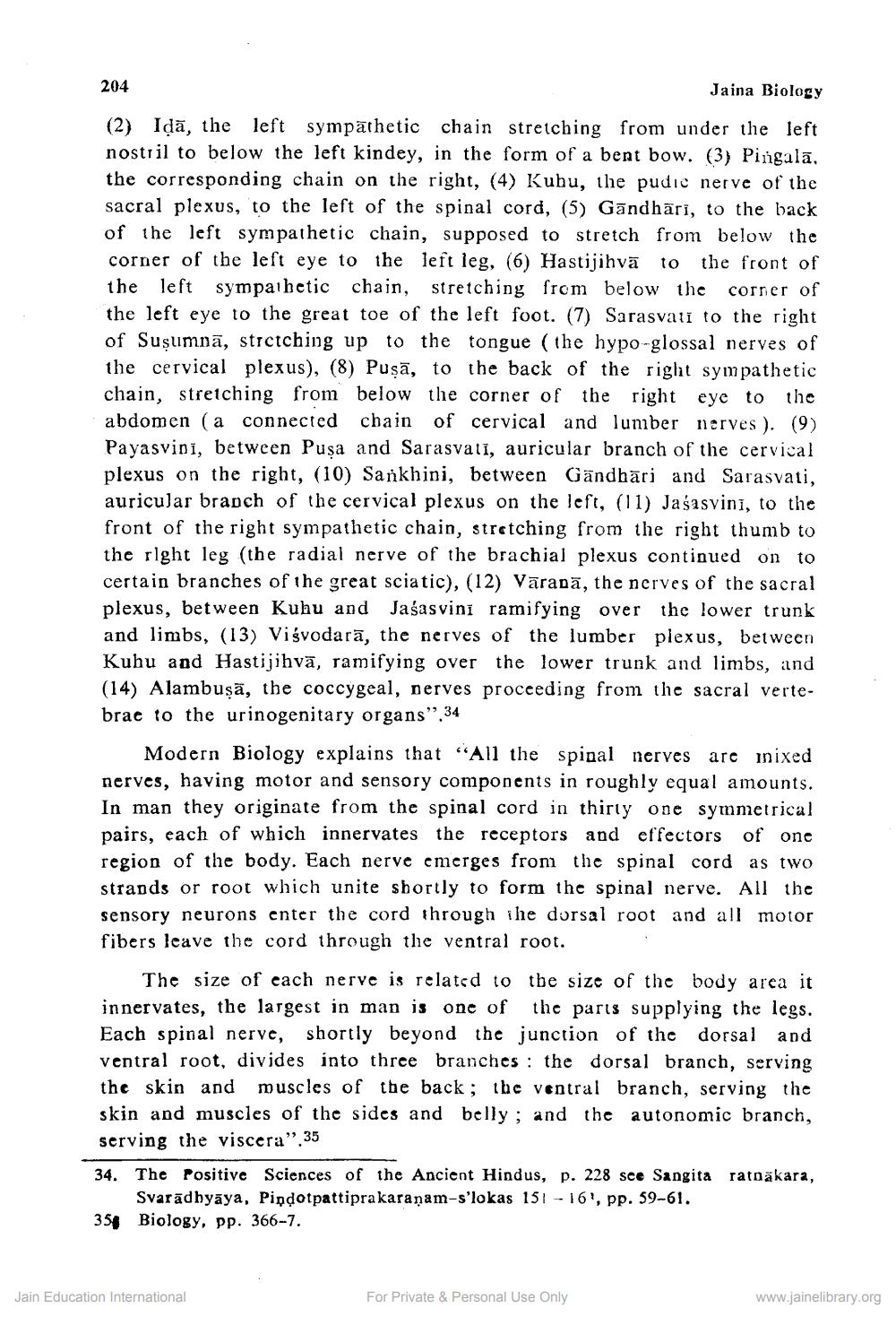________________
204
Jaina Biology
(2) Idā, the left sympathetic chain stretching from under the left nostril to below the left kindey, in the form of a bent bow. (3) Pingalā. the corresponding chain on the right, (4) Kuhu, the pudic nerve of the sacral plexus, to the left of the spinal cord, (5) Gāndhāri, to the back of the left sympathetic chain, supposed to stretch from below the corner of the left eye to the left leg. (6) Hastijihvā to the front of the left sympathetic chain, stretching from below the corner of the left eye to the great toe of the left foot. (7) Sarasvati to the right of Suşumnā, stretching up to the tongue (the hypo-glossal nerves of the cervical plexus), (8) Pusā, to the back of the right sympathetic chain, stretching from below the corner of the right eye to the abdomen (a connected chain of cervical and luniber nerves ). (9) Payasvinī, between Pusa and Sarasvati, auricular branch of the cervical plexus on the right, (10) Sankhini, between Gāndhāri and Sarasvati, auricular branch of the cervical plexus on the left, (11) Jašasvinī, to the front of the right sympathetic chain, stretching from the right thumb to the right leg (the radial nerve of the brachial plexus continued on to certain branches of the great sciatic), (12) Vāradā, the nerves of the sacral plexus, between Kuhu and Jaśasvini ramifying over the lower trunk and limbs, (13) Viģvodarā, the nerves of the lumber plexus, between Kuhu and Hastijihvā, ramifying over the lower trunk and limbs, and (14) Alambuşā, the coccygeal, nerves proceeding from the sacral vertebrae to the urinogenitary organs”. 34
Modern Biology explains that "All the spinal nerves are inixed nerves, having motor and sensory components in roughly equal amounts. In man they originate from the spinal cord in thirty one symmetrical pairs, each of which innervates the receptors and effectors of one region of the body. Each nerve emerges from the spinal cord as two strands or root which unite shortly to form the spinal nerve. All the sensory neurons enter the cord through the dorsal root and all motor fibers leave the cord through the ventral root.
The size of each nerve is related to the size of the body area it innervates, the largest in man is one of the paris supplying the legs. Each spinal nerve, shortly beyond the junction of the dorsal and ventral root, divides into three branches : the dorsal branch, serving the skin and muscles of the back; the ventral branch, serving the skin and muscles of the sides and belly; and the autonomic branch, serving the viscera". 35 34. The Positive Sciences of the Ancient Hindus, p. 228 sce Sangita ratnākara,
Svarādhyaya, Pindotpattipra karanam-s'lokas 151 - 16, pp. 59-61. 354 Biology, pp. 366-7.
Jain Education International
For Private & Personal Use Only
www.jainelibrary.org




